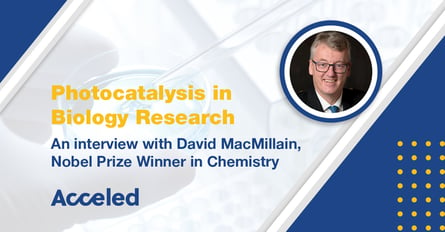Scientific research has the power to unlock new and exciting possibilities, but without ample funding, these discoveries can remain out of reach. Funding drives research and opportunities for innovation. Researchers rely on methods such as photocatalysis to understand small molecule interactions that drive deeper understanding in cancer research, environmental protection, energy production, and more.
Tracking funding dollars paints a picture – it tells a partial story of how government, private industry, and academia intersect and where they diverge. Which sectors receive the biggest gains? Which challenges must we solve first?
Clinical Research
$18.4 Billion
Boosted by an estimated $18.4 billion investment in 2022, clinical research continues making strides in understanding and fighting disease, particularly cancer. A study from Central South University in China, A Literature Review on High-Performance Photocatalysts for Sustainable Cancer Therapy, investigated the use of photocatalyst materials selectively target harmful cells and substances while leaving healthy ones unharmed - opening up a variety of opportunities in cancer treatment without the use of drugs.
Another application of photocatalysis in clinical research is sterilization. In this study, researchers were able to sterilize the contaminated surface of dental implants using a TiO2 photocatalyst.
Drug Discovery
$16 Billion
Photocatalysis brings important advantages to drug discovery, especially in the formation of specific chemical bonds that may not be achievable using traditional means. This is especially useful in synthesizing possible pharmaceutical candidates. A 2020 study by researchers from the American Chemical Society, citing work by David MacMillan, looked at visible-light mediated photocatalysis as it relates to protein bioconjugation, late-stage functionalization, isotopic labeling, DNA-encoded library technology (DELT) and microenvironment mapping (μMap).
Many small-molecule drugs fail in clinical trials because of a lack of protein target validation. In drug discovery, a major goal is the improvement of these methods and photocatalysis is a promising way of accelerating target ID.
By using photocatalytic reactions, the process of drug synthesis can become more efficient and cost-effective, allowing scientists to explore a greater variety of compounds and structures.

Learn more from Nobel Prize winner, Sir David MacMillan, about how photocatalysis instruments are advancing biological research.
Biotechnology
$8.1 Billion
Biotechnology’s mission is to combat disease, reduce our environmental footprint, and create more sustainable practices that benefit the public. Photocatalysis helps develop highly efficient methods for producing biofuels and chemicals as evidenced in a 2022 study published in Frontiers in Chemistry. Researchers have successfully utilized this technology to break down organic matter, leading to the creation of novel approaches to generate biodiesel, biohydrogen, and various other biofuels. The possibilities of this breakthrough are immense and could very well alter the course of energy and chemical production in the foreseeable future.
Biodefense
$2.8 Billion
The importance of biodefense is especially prevalent in the context of the COVID-19 pandemic. Funding for this field is crucial in developing an adequate defense against infectious diseases and other biological threats. Biodefense research initiatives received an estimated $2.8 billion in 2022.
Photocatalysis in biodefense can be used to develop new methods for decontaminating hazardous materials, such as chemicals and biological agents. This has the potential to greatly reduce the risks associated with handling hazardous materials, demonstrated by this research on photocatalytic decontamination of environmental wastewater.
Photocatalysis helps researchers understand interactions at the base level, uncovering information and bringing discovery to light from cancer research to pharmaceutical innovations to biofuels to hazardous material decontamination Acceled supports engineers and scientists with the power of light. Our best-in-class, easy-to-use benchtop photoreactors and cellular catalyst devices fuel scientific discovery helping solve real-world challenges.



